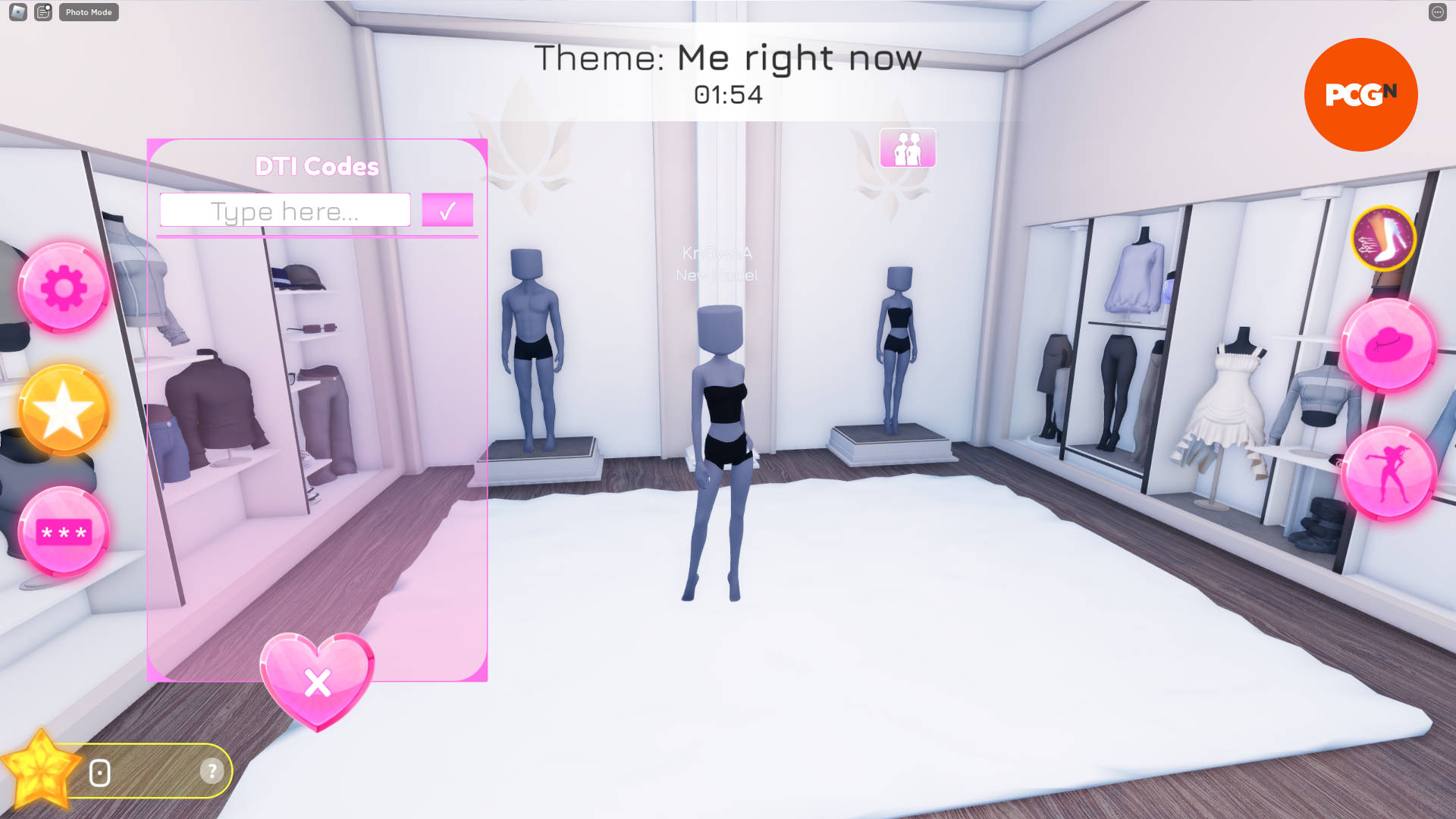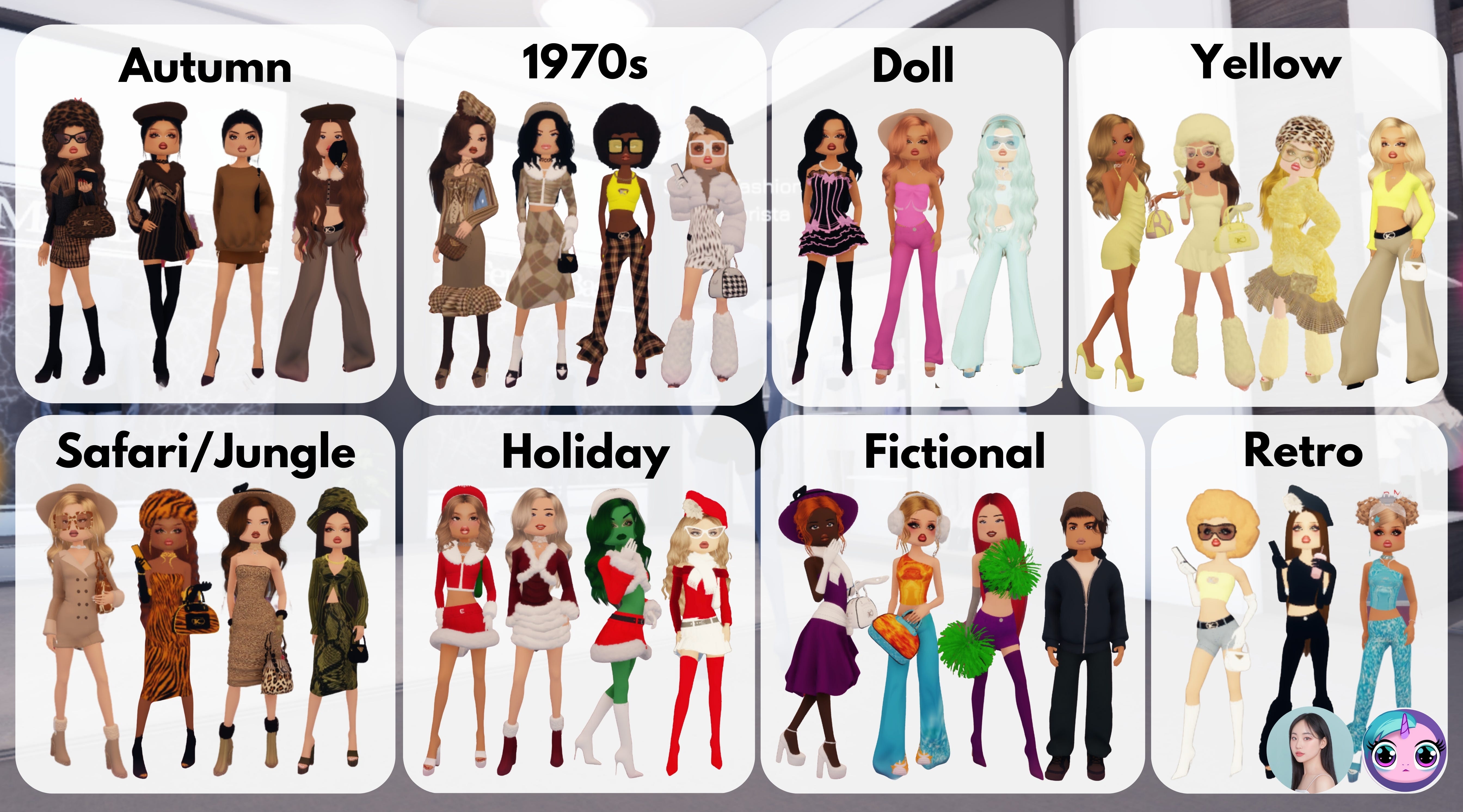Video Game Character Dress To Impress: Unveiling The Secrets Of Iconic Outfits
Video game character dress to impress is more than just a phrase; it’s an art form that has evolved alongside the gaming industry itself. From the pixelated simplicity of early game sprites to the photorealistic designs of modern AAA titles, character outfits have always played a pivotal role in storytelling and player engagement. These outfits not only define the personality and role of a character but also serve as a canvas for creative expression, making them memorable and impactful. Whether it's the armor of a warrior or the sleek suit of a futuristic spy, the way a character dresses can elevate the entire gaming experience.
When we talk about dressing to impress in video games, we’re not just referring to aesthetics. These outfits are meticulously crafted to align with the narrative, gameplay mechanics, and cultural relevance. For instance, characters like Lara Croft and Aloy from *Horizon Zero Dawn* have outfits that reflect their resilience and adaptability, while also being functional for their adventures. Gamers often find themselves drawn to these characters not just for their skills but also for their iconic looks, which resonate with players on a deeper level.
But what makes a video game character’s outfit truly stand out? Is it the intricate details, the cultural references, or the way it complements the character’s personality? As we dive deeper into the world of video game fashion, we’ll explore the elements that make these outfits unforgettable and how they contribute to the overall gaming experience. Whether you’re a fan of RPGs, action-adventure games, or even casual mobile games, understanding the significance of character design can enhance your appreciation for the medium.
Read also:Eva Mckend Husband Everything You Need To Know About Her Personal Life
Table of Contents
- Why Do Video Game Characters Dress to Impress?
- How Does Fashion Enhance Storytelling in Games?
- What Are the Most Iconic Video Game Outfits?
- Can Video Game Fashion Inspire Real-Life Trends?
- How Do Designers Create Unique Looks for Characters?
- The Role of Culture in Video Game Character Dress
- Why Are Customization Options Important for Players?
- How Does Video Game Fashion Impact Gaming Communities?
- What Are the Future Trends in Video Game Fashion?
- Conclusion
Why Do Video Game Characters Dress to Impress?
At first glance, the concept of a video game character dressing to impress might seem superficial. However, it plays a crucial role in establishing the character’s identity and role within the game. For example, a knight in shining armor immediately conveys strength and honor, while a stealthy assassin in dark, sleek clothing suggests agility and cunning. These visual cues help players quickly understand a character’s purpose and personality, creating a more immersive experience.
Moreover, the outfits of video game characters often serve as a reflection of the game’s world-building. In fantasy RPGs, characters might wear elaborate robes or armor that align with the medieval setting. In contrast, sci-fi games feature futuristic designs that emphasize technology and innovation. This attention to detail not only enhances the game’s aesthetic but also reinforces its narrative and thematic elements.
How Does Fashion Enhance Storytelling in Games?
Fashion in video games is not just about looking good; it’s a storytelling tool. A character’s outfit can reveal their backstory, motivations, and even their emotional state. For instance, a tattered cloak might suggest a character’s hardships, while a pristine suit could indicate wealth or power. These subtle details allow developers to communicate complex ideas without relying solely on dialogue or exposition.
Additionally, fashion can be used to create contrast or highlight character development. A character who starts in humble attire but later dons regal robes signifies growth and transformation. This evolution in their appearance mirrors their journey within the game, making it more engaging for players.
What Are the Most Iconic Video Game Outfits?
Some video game outfits have become so iconic that they are instantly recognizable even outside the gaming world. Characters like Mario, Link, and Chun-Li are often associated with their signature looks, which have become synonymous with their identities. These outfits are not only visually striking but also functional, reflecting the character’s role and abilities within the game.
- Mario’s Overalls: A symbol of simplicity and charm, Mario’s outfit has remained largely unchanged since his debut, making it timeless.
- Chun-Li’s Qipao: This traditional Chinese dress, combined with her combat boots, blends cultural heritage with modern flair.
- Aloy’s Armor: Designed for survival in a post-apocalyptic world, Aloy’s outfit is both practical and visually stunning.
Can Video Game Fashion Inspire Real-Life Trends?
The influence of video game fashion extends beyond the digital realm. In recent years, we’ve seen a growing trend of gamers and cosplayers incorporating elements of their favorite characters’ outfits into their everyday wardrobes. This phenomenon highlights the cultural impact of video game character dress to impress and its ability to transcend the boundaries of gaming.
Read also:Caterina Scorsone Pippa Unveiling The Life And Journey Of A Remarkable Star
Brands have also taken notice, collaborating with game developers to release clothing lines inspired by popular games. These collections often feature iconic designs that appeal to both gamers and fashion enthusiasts, further blurring the line between virtual and real-world fashion.
How Do Designers Create Unique Looks for Characters?
Creating a memorable outfit for a video game character requires a blend of creativity, research, and technical skill. Designers often start by considering the character’s role, personality, and the game’s setting. They then experiment with colors, textures, and accessories to ensure the outfit aligns with the overall aesthetic of the game.
For example, a character in a steampunk-inspired game might wear goggles, brass accents, and leather straps to evoke the industrial aesthetic. On the other hand, a character in a fantasy game might feature flowing capes, intricate embroidery, and mythical symbols to convey a sense of magic and wonder.
The Role of Culture in Video Game Character Dress
Culture plays a significant role in shaping the outfits of video game characters. Developers often draw inspiration from real-world traditions, myths, and art to create authentic and relatable designs. This approach not only enriches the game’s narrative but also fosters a deeper connection with players from diverse backgrounds.
For instance, games like *Ghost of Tsushima* and *Assassin’s Creed Valhalla* feature characters whose outfits are deeply rooted in Japanese and Norse cultures, respectively. These designs are meticulously researched to ensure accuracy and respect for the cultures they represent.
Why Are Customization Options Important for Players?
One of the most exciting aspects of modern gaming is the ability to customize a character’s appearance. From choosing hairstyles and accessories to selecting entire outfits, these options allow players to express their creativity and make their characters truly unique. This level of personalization enhances player engagement and fosters a sense of ownership over the gaming experience.
Games like *The Sims* and *Fortnite* have set the standard for customization, offering a wide range of options that cater to different tastes and preferences. These features not only make the game more enjoyable but also encourage players to experiment and share their creations with the community.
How Does Video Game Fashion Impact Gaming Communities?
Fashion in video games has a profound impact on gaming communities, serving as a source of inspiration and discussion. Players often bond over their favorite characters’ outfits, sharing fan art, cosplay, and theories about the significance of certain designs. This shared enthusiasm fosters a sense of camaraderie and belonging within the community.
Moreover, fashion-related events, such as in-game seasonal updates or collaborations with real-world brands, often generate excitement and anticipation among players. These events provide an opportunity for players to engage with the game in new and exciting ways, further strengthening the community’s connection to the game.
What Are the Future Trends in Video Game Fashion?
As technology continues to advance, the possibilities for video game fashion are virtually limitless. Virtual reality (VR) and augmented reality (AR) are already transforming the way players interact with their characters’ outfits, allowing for a more immersive and personalized experience. In the future, we can expect to see even more innovative designs that push the boundaries of creativity and functionality.
Additionally, the growing emphasis on inclusivity and representation in gaming is likely to influence fashion trends. Developers are increasingly prioritizing diverse character designs that reflect the real-world variety of human experiences, ensuring that players from all walks of life can see themselves in the games they love.
Conclusion
Video game character dress to impress is an integral part of the gaming experience, shaping how players perceive and connect with their favorite characters. From iconic outfits that define entire franchises to customizable designs that empower players to express themselves, fashion in video games continues to evolve and inspire. As the industry grows, so too will the creativity and innovation behind these unforgettable looks, ensuring that video game fashion remains a vibrant and dynamic aspect of gaming culture.
The Tragic Story Of The Baxter Family TikTok Death: Unveiling The Truth
Unlocking The Secrets Of Section 112 Row 1 Kia Forum: A Comprehensive Guide
Exploring The Rise Of Cameron J Wright On TikTok: A Journey To Stardom

Dress to Impress codes January 2025

Dress to Impress How Roblox Is Shaping Digital Fashion Culture